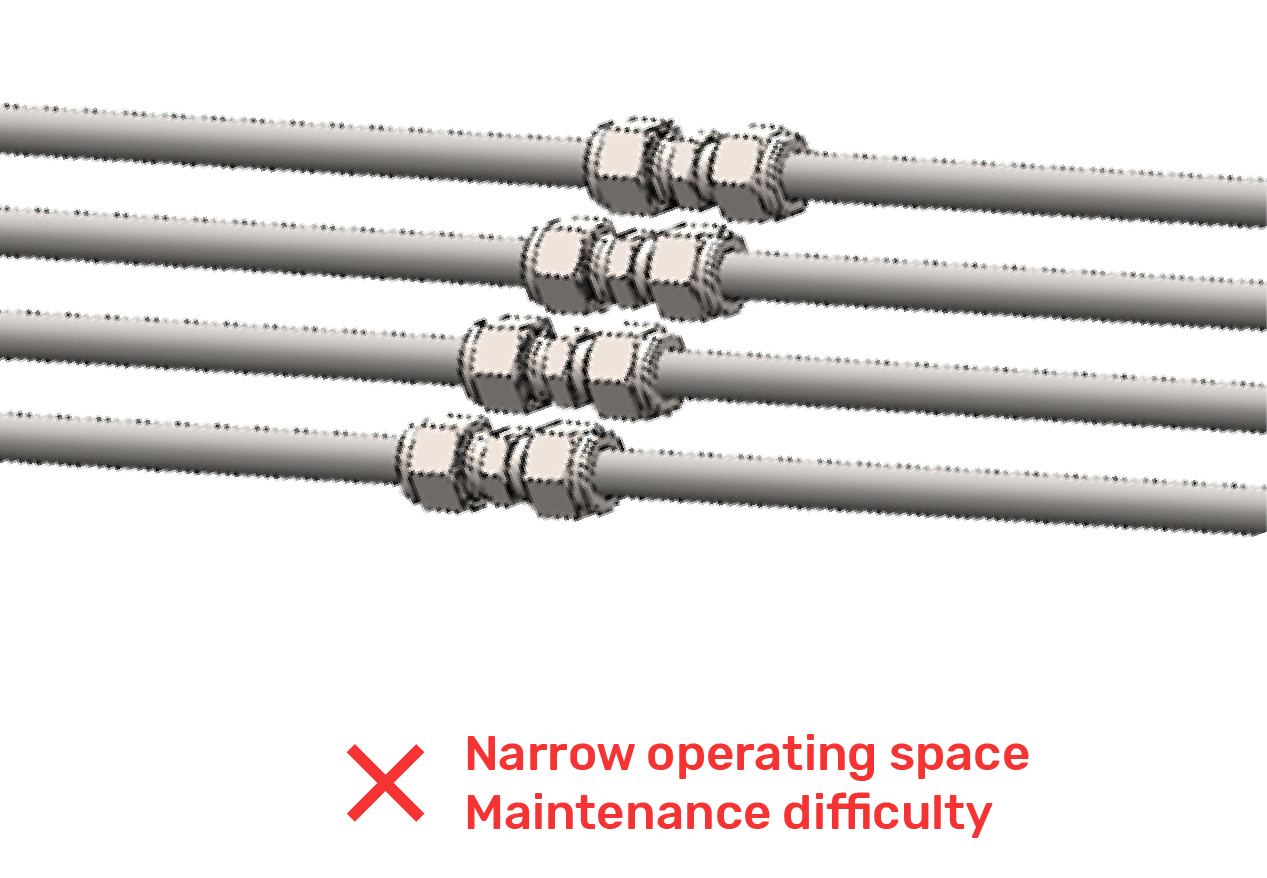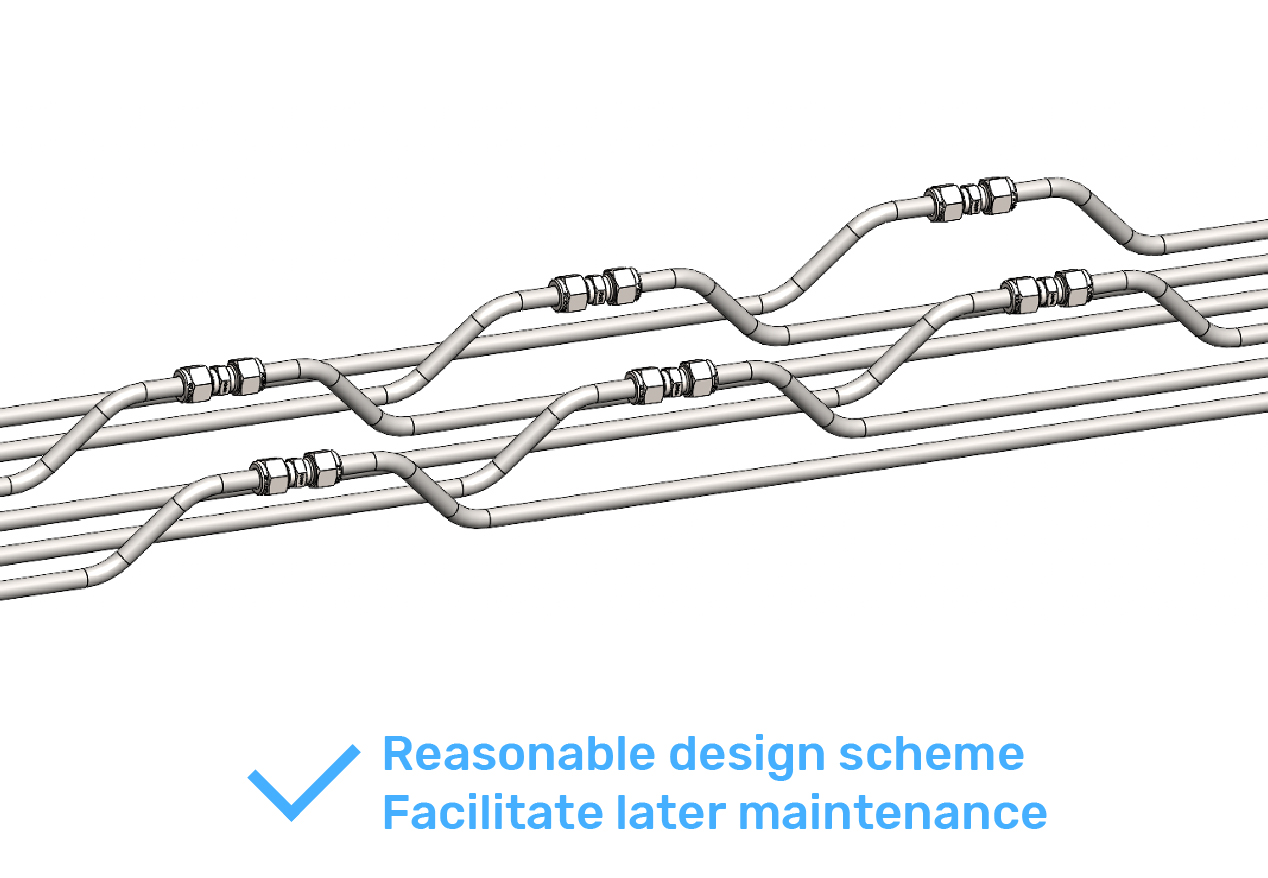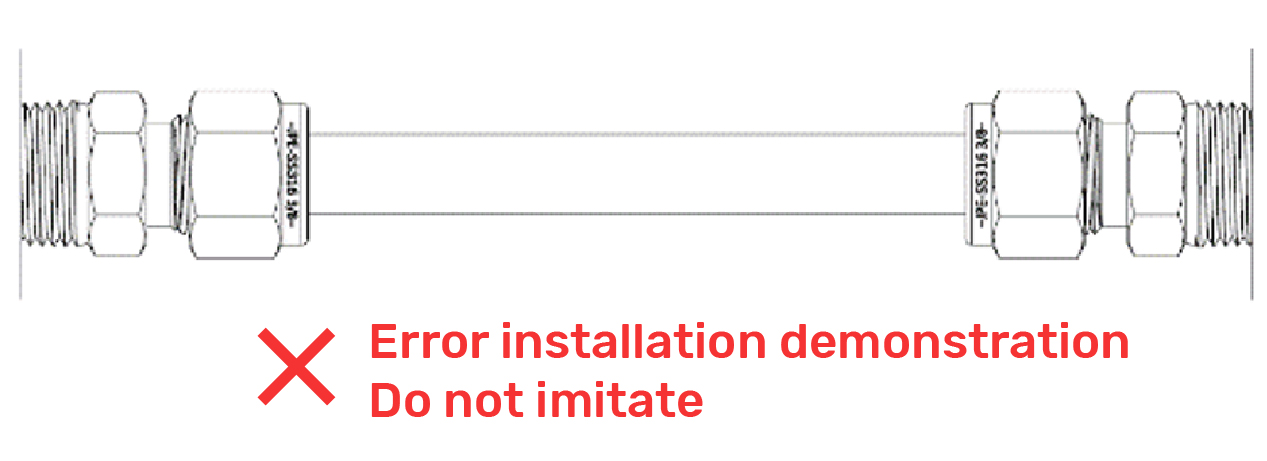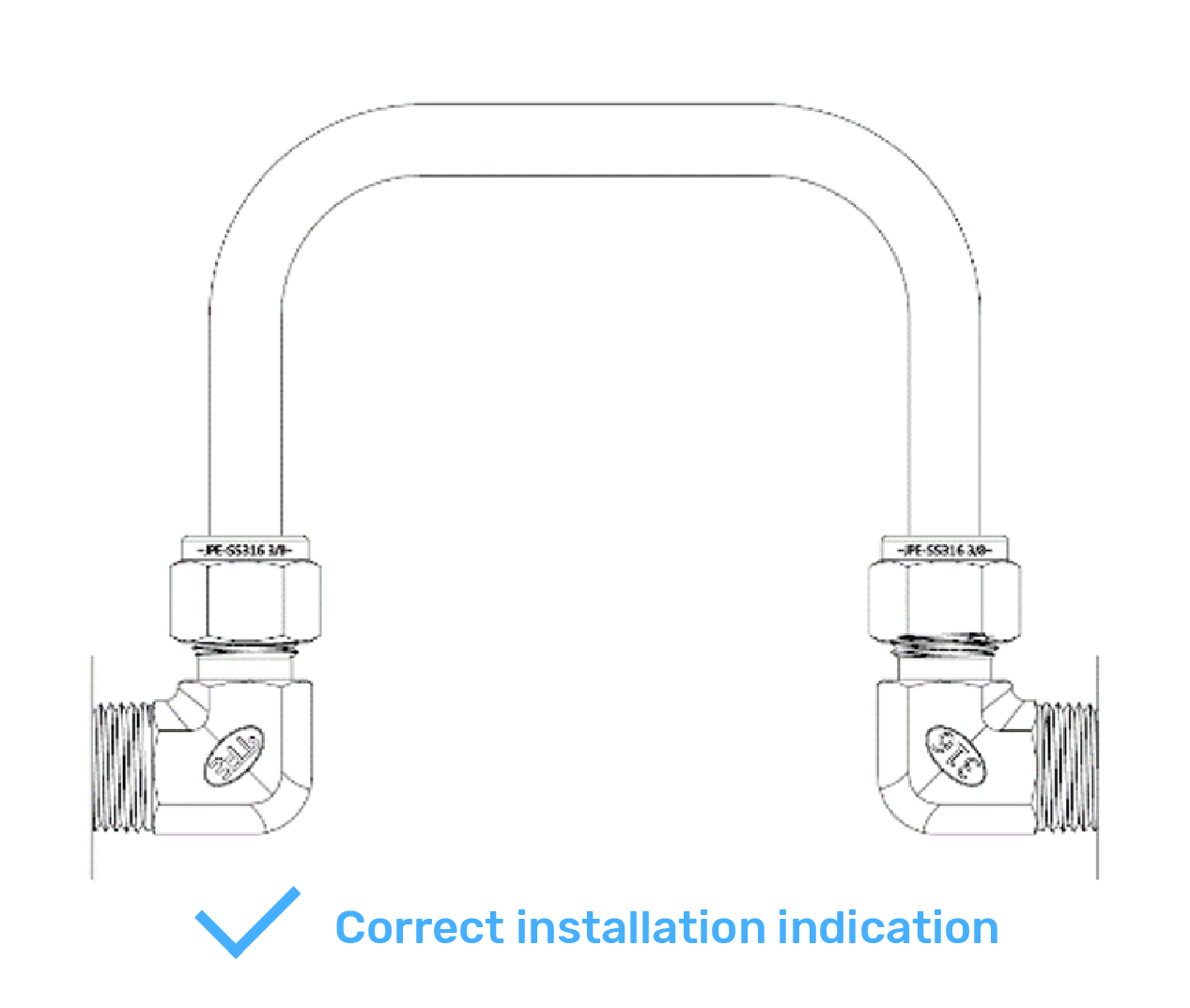JPE Expert Insights | Overlooked Details in Instrumentation Tubing Installation
2024-01-11
Featured Products
When installing an instrumentation system,the first and foremost step is to design and plan the configuration diagram of the tubing. A proficient instrumentation tubing engineer must meticulously and precisely confirm the tubing configuration and the correct application of fittings and valves. This is crucial for saving installation and maintenance time in the future and minimizing the risk of tubing leaks, thereby avoiding the possibility of reinstalling the tubing.
Leakage in tubing is not only influenced by the quality of the product but also by improper tubing and installation. While JPE pursues high-quality products, we also pay attention to consumer concerns regarding tubing and installation issues.
Therefore, this article will address the risk of leaks caused by 'tubing stress,' sharing common examples of tubing design errors and providing specific measures and methods for improvement.
Common Error 1
Improper Support for tubing system
A . When a tubing sags due to excessive length or the higher density and weight of the medium, proper support should be provided.
B . Tubing typically carries the weight of objects such as shut-off valves, pressure reducing valves, and filters. These objects should all receive adequate support.
If these situations lack proper support, the stress caused by the accumulated weight will concentrate on the tube fittings. This can lead to leakage risks when the load becomes excessive and should be avoided.
Common Error 2
Lack of Proper Installation and Maintenance Space
A . When laying multiple tubing routes, the initial installation of tubing in sequence may not pose difficulties. However, during future maintenance, challenges may arise due to limited operating space, leading to increased maintenance costs and even the predicament of being unable to maintain. Therefore, fittings should be arranged in a staggered manner, providing adequate space for wrench operation. This facilitates installation, saves space, and maintains a user-friendly design for future maintenance.
B . It is advisable to avoid any straight pipelines between two fixed fittings without any possibility for maintenance.


Common Error 3
Lack of Design for Expansion Loops
The straight tubing between two fixed fittings, when simultaneously pressing against the bottom of both fittings, creates numerous contradictions.
A . During the installation of the socket joint, as it rotates a certain number of turns with the nut, it inevitably generates significant tensile stress at both ends of the straight tubing.
B . The temperature-induced thermal expansion of the tubing, caused by environmental temperature changes or media flow, is unavoidable. Once it occurs, it leads to considerable stress on the pipeline.
The lack of a designed expansion loop in both situations directly results in tubing leaks. Additionally, this installation method, even with precision CNC length-cut tubing, cannot adequately support the bottom of both tubing, violating standard installation procedures.

【Incorrect Installation】The occurrence of leaks in both installation methods is inevitable. Temperature-induced thermal expansion causes tubing movement and generates substantial stress. The tubing are unable to withstand the bottom of both fittings, violating standard installation procedures.

【Correct Installation】Both installation methods mentioned above reserve space for temperature-induced thermal expansion. The installation and disassembly are straightforward, ensuring the tubing can be correctly inserted into the bottom of both tubing, adhering to standard installation procedures.
Common Error 4
Manual tubing Cutting and Bending with Insufficient Precision/strong>
Manual tubing cutting and bending with inadequate accuracy are common in practical scenarios. Due to time constraints and various pressures in the field, it is often done without proper adjustment for precision. Tubing is forcefully squeezed, stuffed, pulled, and pushed into fittings, leading to two major problems:
A . Instrumentation tubing carry significant stress, posing a substantial risk of leakage to the fittings and lead to the risk of stress corrosion.
B . In such installations, it can be expected that tubing will be unable to correctly align with the bottom of the fittings, violating standard installation procedures.
In light of this, engineers with thorough professional training should meticulously design and measure the length and angles of tubing. When bending tubing, patient adjustments should be made to eliminate stress before inserting them into fittings, ensuring the mitigation of leakage risks.
Reliable and experienced partners not only endorse the quality of critical components but also offer rational and precise selection recommendations in the early stages of tubing system planning. Their insights contribute to the overall rationality of tubing system layout and the safety of the system, making them valuable consultants.
JPE is widely recognized by customers both domestically and internationally. We efficiently and precisely assist clients in selection and installation tasks, actively contributing to system safety through collaborative efforts and continuous improvement.
See more JPE Featured Products ➡️